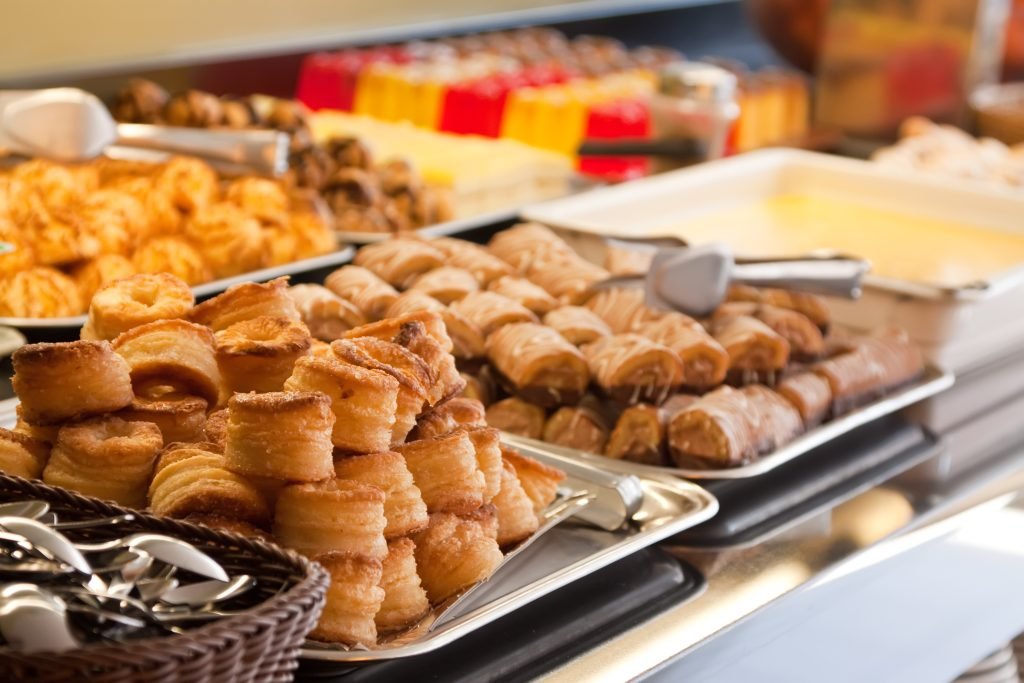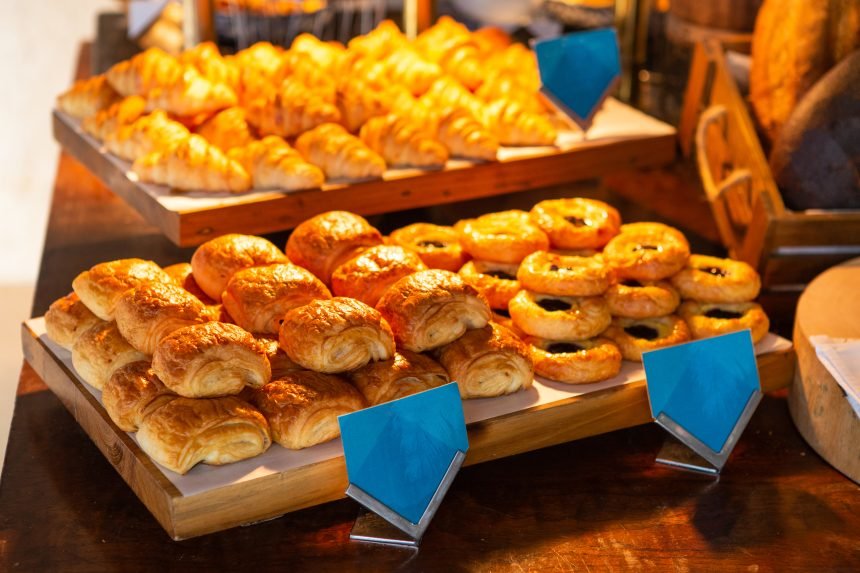Portugal is renowned for their unique flavors and rich history. The country really appreciates food, and desserts are no exception. Portuguese Sweet Pastries have captivated dessert enthusiasts around the world. Pastelarias (pastry shops) and padarias (bakeries) are found almost everywhere and serve the most delectable sweets you can imagine in Portugal. The classic Pastel de Nata is the most famous pastry in the country which began in 19th-century and is served till date as the highly demanded sweet treat by locals and tourists alike.

This intriguing fact is only a peep into the delectable world of Portuguese confections. Take a bite into the flaky, custard-filled tart or the creamy almond pastry, each with its own narrative and distinct flavor. The charm of these pastries stems from their simplicity and high-quality ingredients, making them irresistible to both locals and visitors. Exploring these sweet treats will give you a better understanding of Portugal’s cultural and gastronomic landscape.
Let’s explore the most beloved Portuguese sweet pastries, their origins, and why they are a must-try for any food enthusiast.
Portuguese Sweet Pastries
1. The Iconic Pastel de Nata

Pastel de Nata is said to have been invented in 1837. This creamy, custard-filled dessert originated at Jerónimos Monastery in Lisbon’s Belém area. Monks and nuns used egg whites to starch garments, resulting in an excess of egg yolks. They began using the remaining egg yolks to develop a delicious custard recipe, which was kept secret for over a century. This resulted in the creation of Portugal’s most famous pastry, Pastel de Nata. As a result of the 1820 liberal movement, all convents and monasteries in Portugal were closed in 1834, and clergy and laborers were relocated.In order to survive, someone from the monastery sold excellent cakes to the owner of a pastry store.
Pastel de Nata’s appeal originates from the beautiful combination of flavors and textures. The crispy, flaky pastry exterior holds a creamy, sweet custard inside, creating an attractive contrast. A sprinkle of cinnamon and powdered sugar on top adds a subtle spice that complements the overall flavor.
While there are other bakeries in Portugal that create custard tarts in Lisbon, Pastéis de Belém is still a family-owned business with no subsidiaries or franchises. Fábrica dos Pastéis de Belém continues the tradition of Portugal’s most famous pastry, handcrafting each one to ensure authenticity and excellence.
2. Traditional Travesseiros

Travesseiros, meaning “pillows” in Portuguese, hail from the picturesque town of Sintra. This sweet is one of Vila de Sintra’s ex-libris and is known as “Piriquita,” an old bakery in Sintra that was created in 1862. At the time, Amaro dos Santos, a professional baker, and his wife, Constância Gomes, worked there.
King D. Carlos I personally pushed the couple to manufacture queijadas, a sweet that he enjoyed during his summers in Sintra. It was a big hit, and the bakery quickly became a pastry shop. Years later, in the 1940s, while much of the world was at war, a new gem emerged in Sintra. Constância Luísa Cunha, the founder’s daughter, discovered the Travesseiro recipe while perusing an old recipe book, which has since become a favorite dish among village tourists. These pastries are also named because of their rectangular, pillow-like shape.
Travesseiros are thin, airy pastries filled with a sweet, eggy almond cream and topped with caster sugar. It is comprised of puff pastry filled with almond cream and egg yolk, resulting in a rich and decadent delight. The flaky crust and sweet, nutty filling provide a wonderful balance of textures and flavors typical of Portuguese sweet pastries.
3. Heavenly Queijadas

Queijadas de Sintra are most likely the earliest dessert from Sintra’s culinary history to be memorialized in Portuguese literature. These pastries have been around since the Middle Ages when they were created to use up extra cheese. There aren’t many baking firms in Portugal that can claim to have been in operation since 1756. Queijadas da Sapa, the first bakery to create queijadas of Sintra, may proudly display “Since 1756” on its labels and storefront.
Until the middle of the 18th century, queijadas were produced from scratch and used to pay forum, a tax for land use that was frequently paid in the form of pastries, grains, or animals rather than cash. In Sintra, some people paid their rent with queijadas, which the authorities thought significant enough to accept as payment.
These little and spicy nibbles are not only, as the name implies, the pride and pleasure of Sintra, but they are also among the best inventions in the extensive Portuguese sweet pastries catalogue. In truth, they were popular for several decades before 1837, when the café in Belém began selling Pastéis de Belém, the famed custard tarts.
Queijadas have a distinctive, slightly dense texture and a flavor that combines sweetness with a faint tang from the cheese. The crunchy queijadas de Sintra are made using flour and salt for the dough and cottage cheese, sugar, egg yolks, flour, and cinnamon for the filling. They brighten the palette and soul. Sapa makes its dough by hand, using only flour and water. The bakers then cut the dough into rings, making six cuts along the sides and pleating them to form the shape of a little saucer.
This is a delicate operation because temperature and humidity can alter the texture. After drying the dough for 24 hours, they fill it with a mixture of eggs, fresh cheese, sugar, flour, and cinnamon. Baked in an extremely hot oven at 400 degrees Celsius, the tart browns emit an intoxicating perfume.
4. Delightful Pão de Ló

Pão de ló, also known as Portuguese sponge cake, dates back to the 15th century and is thought to have originated from a monastic recipe. Pão de ló was first recorded in the writings of Infanta Maria of Portugal in the mid-1500s. It was described as a thick pudding cooked with powdered almonds instead of wheat flour. Domingos Rodrigues, the head chef of the Portuguese royal family, offered a flourless and eggless version of the recipe in his book Arte de Cozinha (Art of Cooking), published in 1693. The modern variant of pão de ló dates back to at least 1773.
This light and fluffy cake is one of the most popular and appealing among the Portuguese sweet pastries. It is also a testament to simplicity, as it only contains eggs, sugar, and flour. The procedure of beating the eggs and sugar until very frothy is what gives it its delicate texture. Some regional varieties feature a gooey, underbaked middle that contrasts nicely with the exterior sponge.
5. Irresistible Bolas de Berlim

The bola do berlim, or Berlin Ball, is a traditional German cake that gained popularity in Portugal during World War II after Jewish refugees brought the recipe to the country. The cake’s original name was Berliner Pfannkuchen, which means “Berlin pancake.” Portuguese Bolas de Berlim, like its German counterparts, resemble doughnuts with no central hole. It is Portuguese tradition to serve this Portuguese sweet pastries at practically any gathering that requires a dessert, and they are especially delicious in the summertime.
Bolas de Berlim in Portugal are usually filled with a creamy egg-based custard. The cake is constructed of delicious, spherical, fried dough balls filled with a sweet filling and dusted with powdered sugar. Regular sugar is often sprinkled on top for extra sweetness. The typical filling is egg custard, although other flavors such as chocolate, fruit, and coconut have gained popularity over the years. Nowadays, there are a few varieties available, like Bola de Berlim with sweet dulce de leche and even Nutella!
6. Sweet and Nutty Toucinho do Céu

Toucinho do Céu, translates as “Bacon from Heaven,” is a typical almond and sugar dessert that originated in convents in the nineteenth century. Interestingly, the name of the dish translates as pork from heaven, presumably because some of the first recipes included pork lard. But it does not contain bacon; rather, it refers to its heavenly flavor. Between 1790 and 1792, the convent experienced an internal upheaval chronicled in the form of a monastic history. This story contains references to certain convent sweets, especially Toucinho-do-Céu.
In its most basic version, this classic cake of the Portuguese sweet pastries contains sweet syrup, fat, ground almonds, and a generous amount of egg yolks, with typical additions including various spices and chila squash. It’s popular on special occasions and festivals, representing indulgence and celebration. The most popular local variants come from Guimarães, Murça, and Trás-os-Montes.
“Portuguese pastries are more than just delicacies; they embody the country’s gastronomic tradition. Each pastry tells a story, based on centuries-old recipes handed down through generations. From the popular Pastel de Nata to the traditional Toucinho do Céu, each offers a tale about Portugal’s history and its continuing fondness for sweets. Whether you’re planning a trip to Portugal or just want to sample its flavors from afar, these pastries are a must-try. “






